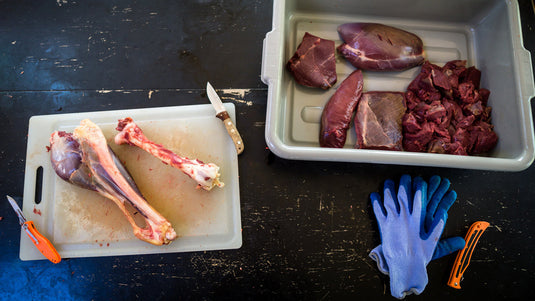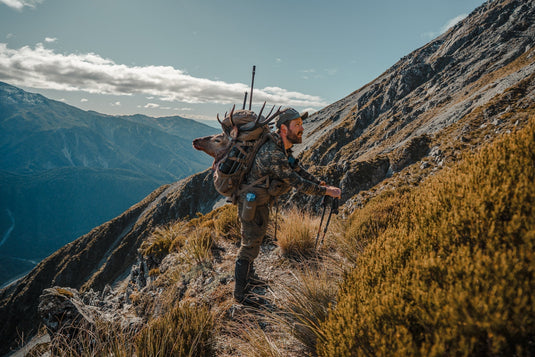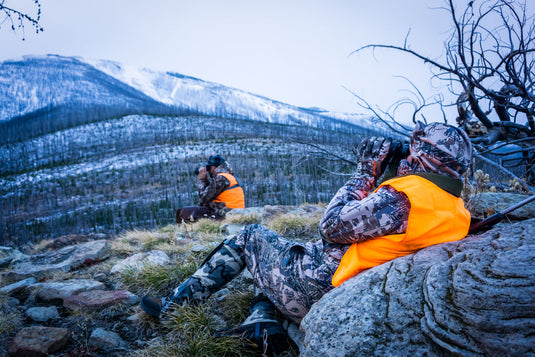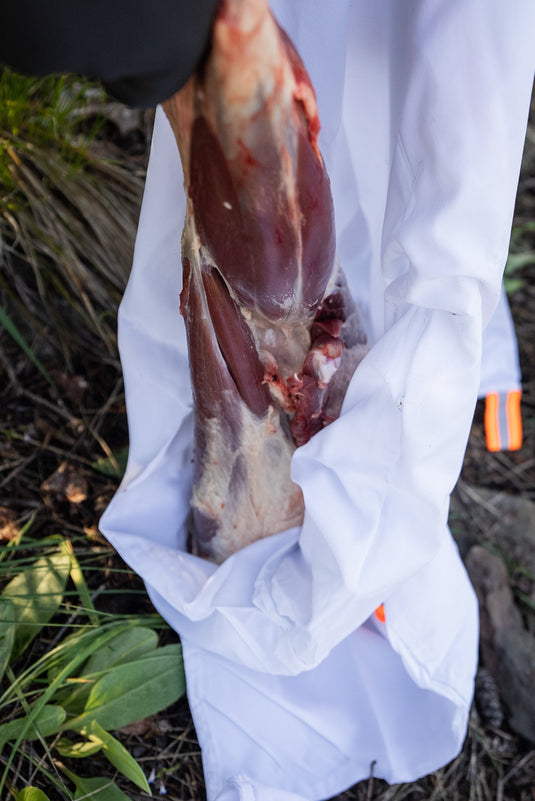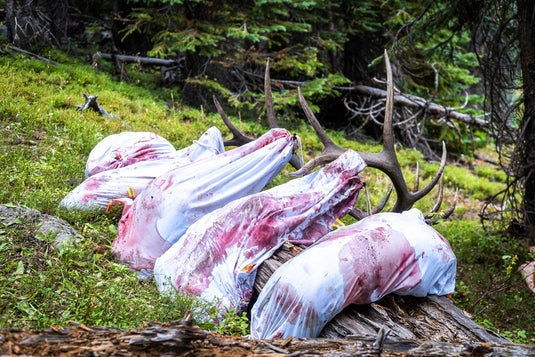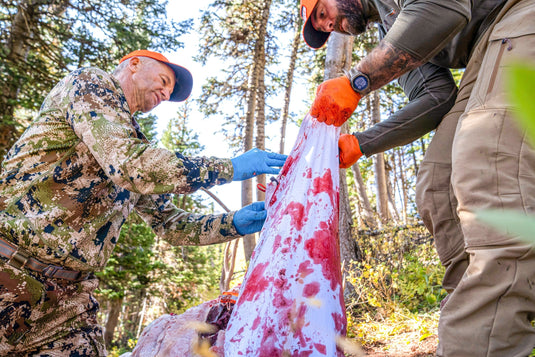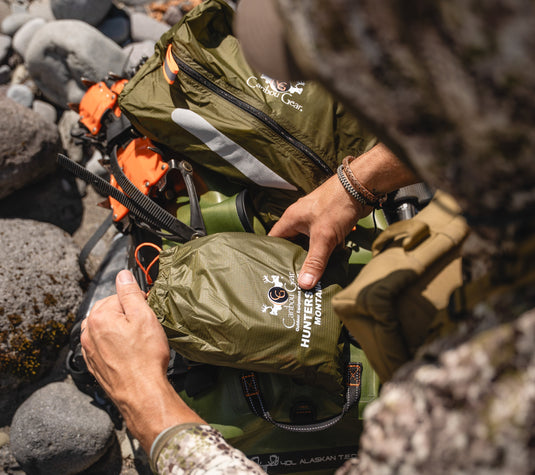In order to give yourself the highest possible confidence going into a hunting trip, it helps to have confidence in your equipment. Feeling prepared with your weapon should be at the top of that priority list. Then, things like boots and layering systems require forethought. Spend time well in advance of the season to get these things dialed. That way, in the days and weeks leading up to the season, you can stay focused on locating animals and finding success on your hunt.
PRE SEASON PREP FOR BOW HUNTING
Bow hunters get first crack at the woods in most states and early archery seasons are just around the corner. Procrastinating through the spring and summer is all too easy and a lack of preparation leads to reduced confidence and accuracy in the field. Get busy and stay ahead of the curve. You won’t regret the early efforts when opening day arrives.
Work Over Your Bow
Before anything happens, your bow should be set up for practice with the same sights, rests, string and accessories that will be used during the hunt. Take this time to consider changes, maintenance and options for the bow itself. Make sure the string has plenty of life left because it must endure a few months of shooting before jumping into the hunt. If you plan on changing to a new string, now is the time. You will have plenty of opportunity to break in the material before the season arrives.
Also, match your practice arrows to field arrows and use field points with a weight that matches the broadheads in your hunting quiver. Just before the season, you should shoot with a few broadheads and arrows that match the hunting specifications to ensure the bow is sighted perfectly for the hunt.

Mix Up the Targets
Leading into bow season, shooting on a near daily basis is essential. Practice like crazy but avoid setting a routine that lacks variety. During a hunt, shooting from different angles and positions is not uncommon. Practice shooting off a knee, at variable distances and from angles that resemble a tree stand and setup targets in areas with trees and breaks in the landscape. Shooting on a level surface is still great for daily repetitions but utilizing breaks in the landscape shifts the perspective and requires your eyes to focus on the target in an organic environment.
Shoot block targets but also incorporate realistic targets to focus tight groupings on vital organs. If you utilize ground blinds and tree stands in the field, practice shooting from the same positions. Setup your stands and blinds and use them during practice to ensure everything is functioning properly and ready for the season.
Scout and Prepare
It’s never too early to start scouting and preparing. Setup game cameras, clear treestand sites of limbs and debris to create clean shooting lanes and watch from a good distance to pinpoint the perfect hunting locations. In the west, that means glassing the big country that elk call home and in the whitetail river bottoms that means glassing fields, looking for funnels and building a strategy to intercept animals. It doesn’t matter what species you are after, early season scouting can pay off big time when the season opens.
BOOTS AND OTHER ESSENTIALS
Investing in high quality gear is important and modern equipment can make a serious difference in terms of comfort and performance in the field. Simply making the purchase however falls far short of being field ready. Testing and breaking in boots, packs, clothing ahead of the season is a critical step that will prevent blisters, failures, and general breakdowns when that gear should be helping you push harder on hunts.
Beyond your weapon, here are a few things to consider in advance of the hunting season…
Break In Your Boots
Hunting boots are your lifeline in the field and a pair that fails can ruin the entire trip. An ill-fitting pair of boots will discourage you from pushing over that next ridge and ultimately limits your range and hiking capabilities. Anytime you purchase a new pair of boots, get them out on hikes throughout the summer to help along the break-in period. Even wearing the boots around town will help them conform to your feet.
Using new boots is obvious but what about that favorite pair of hunting boots that performed well over the previous season? Materials contract and boots that once fit perfectly can still require a few hikes before they feel just right again. In some cases, it’s as much a matter of training your feet to work in the boots again. Work your favorite pair of hunting boots into a summer hiking routine that will ensure they are ready for opening day.
Don’t forget that great boots will never live up to their full potential with sub-par socks. Never wear cotton in the field. Instead, get a few pairs of merino wool or a merino-synthetic blend socks that are designed for hiking. We personally use Kenetrek boots and socks.

Test New Clothing
New clothing might fit perfectly off the shelf. But that does not immediately translate into all-day field comfort. Every individual has a slightly different body type. Wearing pants, shirts, socks and jackets on a few long pre-season hikes will ensure everything fits and feels great.
The base layers are especially important because they make constant contact with your skin. A base layer that doesn’t fit quite right can form hotspots and cause discomfort on a long hunt. Test everything thoroughly, wash and test again. Also, don’t forget to shoot your bow and practice shouldering your rifle while wearing your layering system and your bino harness. Make sure that nothing interferes with your draw motion or shooting routine.
For more tips on building a layering system, see our recent series on this subject where we offered ideas for early season, mid-season and late season layering systems.
Wear Your New Pack
Hunting backpacks might be easy to overlook when it comes to pre-season testing. But finding the right fit and adjustments are critical. You don’t want to waste time messing with your pack when you should be glassing or covering ground. This proves especially true on multi-day backcountry hunts that require full days of walking with a loaded backpack. An ill-fitted pack will quickly cause discomfort at the shoulder strap contact points and on the chest and waist strap regions.
Take a few summer hiking trips or ideally, backpacking trips. These trips serve a double purpose by testing the pack while creating an opportunity to play with weight distribution and hunting gear. Anything that proves as dead weight can be removed to lighten the load come hunting season.
If there is rubbing at the shoulder harness or waist belt, make adjustments to the torso length or other areas to ensure your hips are absorbing some of the load. The straps themselves are rarely the problem and training hikes are the perfect opportunity to find the sweet spot while conditioning your body to function with the pack.
Don’t Procrastinate
Don’t wait until the last minute. Start your hunting gear prep now to avoid stress right before the season. If you need suggestions, check out the gear we carry here in the Caribou Gear store. We carry items that we personally use in the field. Our store is fully stocked with Caribou Gear Game Bags, Jet Boil stoves, lightweight backcountry meals from Peak Refuel and Mountain House, Kenetrek boots, knives and more
Start getting prepared! Hunting seasons will be here before we know it.









